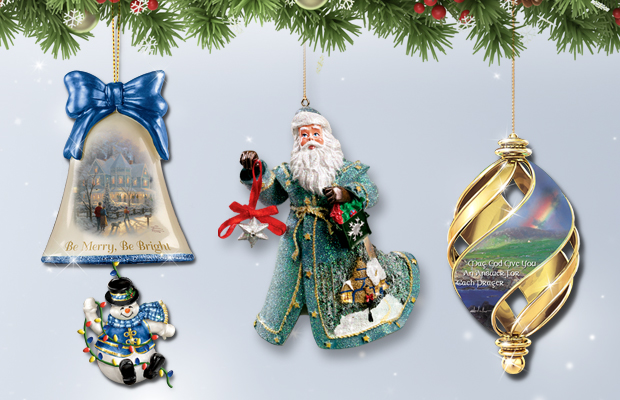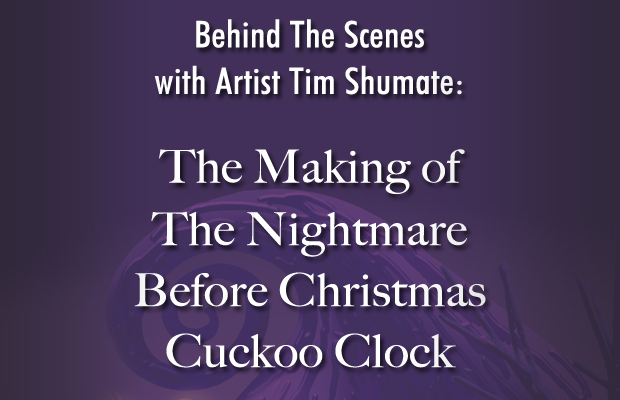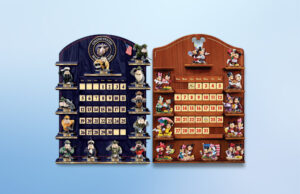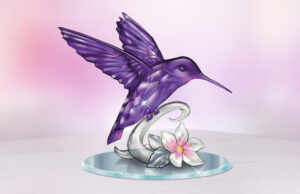Christmas ornaments have become such an indispensible part of the holidays, it’s hard to imagine a Christmas celebration without them. But there was a time when many Americans thought the idea of putting a tree inside your home was…well, a little absurd! Actually, Christmas wasn’t widely celebrated at all in the United States until the 1840s, at least not with carols, decorations and merry festivities. It’s not that we were a country of humbugs, exactly. But as a young nation with strong Puritanical roots, many Americans at the time saw Christmas trees as pagan symbols that dishonored the sacred meaning of the holiday.
So what changed our minds? Part of it was a shift in population. As more and more German, Irish and British families immigrated to America, they brought their traditions with them. For the Germans in particular, Christmas ornaments were a big part of these traditions. In fact, many of the stories surrounding the origins of the Christmas tree come from Germany.
One of my favorite of these stories is that of a 16th century German preacher named Martin Luther, who was walking through the woods one winter night when he looked up to see the stars twinkling among the evergreens. He was so awed by this sight that he erected a fir tree in his home and wired its branches with candles to recreate the scene for his family (thankfully, the invention of electricity would provide a much safer way to enjoy this dazzling sight indoors).
Over the next 200 years or so, Christmas trees gained widespread popularity across Europe, but it wasn’t until the mid-1800s that the custom really gained any traction here in the United States. The influx of German immigrants played a major role in this, but it was a British monarch who helped really bring the Christmas tree into vogue. This should come as no surprise to anyone who follows the elegant fashion of Duchess Catherine like I do!
Much like the Duchess, Queen Victoria was beloved not only in England, but among fashionable members of American society as well. So when a sketch of her standing before a lavishly decorated Christmas tree appeared in the Illustrated London News in 1846, it wasn’t long before Americans were clamoring to recreate the display in their own homes. The Christmas tree had finally arrived – and thanks to the Germans, we had plenty of ornaments to decorate them.
F.W. Woolworth began stocking his stores with handcrafted ornaments from Germany in the 1880s, and by 1890 he was reportedly selling $25 million worth. At five and dime prices, that’s a lot of ornaments! Prized for their originality of design and skilled craftsmanship, these German-made ornaments were crafted mainly of hand-cast lead or hand-blown glass and featured the figures of children, saints and animals.
As ornaments grew in popularity, they also became more elaborate in design and material, as artisans began incorporating tinsel, silk thread and chenille. Japan and Czechslovakia began adding their designs to the mix in the 1920s, but it wasn’t until the dawn of World War II that a U.S. company started creating ornaments here at home. And true to the enterprising American spirit, we didn’t just create ornaments – we revolutionized the way they were created.
In the late 1930s, a businessman names Max Eckhardt teamed up with a representative of F.W. Woolworth and the New York-based Corning Company to create American glass ornaments on a grand scale for the first time. Using a machine originally designed to make light bulbs, the Corning Company could produce thousands of ornaments per minute. Corning then sent these ornaments to other companies for decoration, like Eckhardt’s All-American company known as Shiny Brite.
Thus began the dawn of America’s ornament making traditions. Today, Christmas ornaments are crafted in as many materials, shapes and sizes as can be imagined and sold online and in stores across America, but the most cherished ornaments continue to be those distinguished by the individuality and attention given to handcrafting fine, original ornaments. After all, there’s something so special about an ornament that was lovingly created by hand, don’t you think? I know my favorite ornaments are those that have a personal touch, whether it’s a macaroni-and-construction-paper craft from childhood or the heirloom ornaments that have been in my family for generations. I’d love to hear from you about your favorite ornaments and traditions, so please share them in the comments!
That’s all for this post, but I’ll be sharing more about the traditions behind Christmas ornaments and other decorations as the holiday season approaches. In the meantime, if you’re looking for unique collectible ornaments that are handcrafted according to time-honored traditions, you’ll find a splendid selection right here. For now, thanks for reading – and happy tree trimming!
What Is the Tradition Behind Christmas Ornaments? by Ann Kelley










